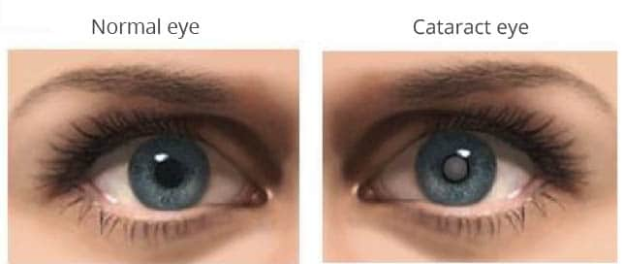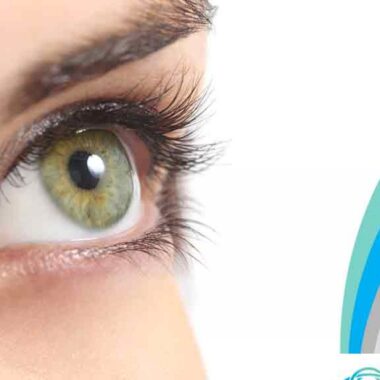What is Cataract?
Cataract is the dense, cloudy area that forms in the lens of your eye which is usually clear. Most cataracts develop gradually overtime and cause blurry vision. You may not notice them initially until they start blocking light.
Dr. Mayur Jawale is the Best Eye Specialist in Bhosari with more than a decade of experience in the field of eye care.
A cataract begins when proteins in the eye form clusters that prevent the lens from sending clear images to the retina. The function of the retina is to convert the light that comes through the lens into signals. It sends these signals to the optic nerve, which sends them to the brain for processing.
It is possible to develop cataracts in both the eyes, but they usually don’t form at the same time. Cataracts are common in older people and they can be safely removed surgically.
A cataract begins when proteins in the eye form clusters that prevent the lens from sending clear images to the retina. The function of the retina is to convert the light that comes through the lens into signals. It sends these signals to the optic nerve, which sends them to the brain for processing.
It is possible to develop cataracts in both the eyes, but they usually don’t form at the same time. Cataracts are common in older people and they can be safely removed surgically.
Most people start getting cataracts around age 40, but you probably won’t notice them until after age 60. People having a family history of cataracts, addictive smokers or heavy drinkers are more prone to cataracts.
Symptoms
Cataracts are a common part of the eye’s aging process. Following are the symptoms of cataract:
- Cloudy or blurry vision.
- Sensitivity to bright lights.
- Seeing glare or halo around lights especially while driving at night.
- Frequent changes in prescription glasses.
- Double vision in the affected eye.
- Poor night vision.
- Changes in the way you see colour.
Causes
There are several underlying factors that cause cataracts. They include:
- Certain diseases like diabetes.
- Radiation therapy in the upper body.
- Excessive smoking.
- Family history of cataracts.
- Long-term use of steroids and other medications.
- Unrestrained alcohol consumption.
Types of Cataracts
Nuclear cataracts
These are also known as nuclear sclerotic cataract. This is the most common type of cataract found in patients. They form in the center of the lens, known as the nucleus. Overtime, your reading vision may actually get better which is referred to as second sight, but it doesn’t last long.
Over time, the lens hardens and turns yellow or even brown. You have a hard time seeing small details, colors get less rich, and you start seeing halos around bright objects at night.
Cortical cataracts
These take shape on the outside edge of your lens, called the cortex. They start as white wedges, like triangles that point towards the center of your eye. Overtime, they scatter light. The main symptom is glare. You may find it hard to drive at night. They can also make your vision hazy, like you’re looking through a fog. It may be hard to tell colours apart or to judge how far away an object is.
Since they can spell trouble for both near and distance vision, it is best to get them removed in the initial stage itself.
Congenital cataracts
These are cataracts that you’re born with or that form when you’re a child. Some are linked to your genes, and others are due to an illness that your mother had during pregnancy.
When they’re small or outside the center of the lens, they may not need treatment. But when a baby’s born with one that blocks vision, a doctor needs to remove it because it can stop vision.
Traumatic cataracts
Many kinds of injuries can lead to a cataract. You can get one if you’re hit in the eye by a ball or get hurt from a burn, chemical, or a splinter. The cataract could come on soon after the injury or not show up until years later.
Prevention
Developing cataracts is a typical part of aging. You can take a few steps to protect your eyes and reduce your risk of developing cataracts:
- Protect your eyes from UVB rays by wearing sunglasses outside.
- Take regular eye exams.
- Stop smoking.
- Eat fruits and vegetables that contain antioxidants.
- Maintain a healthy weight.
- Keep diabetes and other medical conditions in check.
About Dr. Mayur Jawale
Dr. Mayur Jawale is the Best Eye Specialist in Bhosari. He has successfully completed his MBBS from MIMSR Medical College, Latur and MS in Ophthalmology from Grant Medical College (J.J. Hospital), Mumbai in 2012. Moreover, he has done a fellowship in Phaco Surgery from H.V. Desai Eye Hospital, Pune.
To know more about Dr. Mayur Jawale, please visit Dr. Mayur Jawale/About Us.
For further enquiries, leave us a message or contact us.




